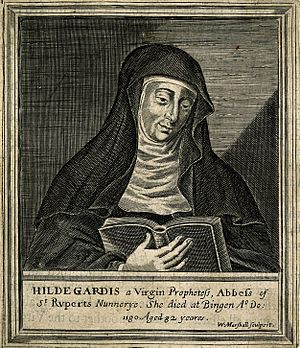
Back Kirchenlehrer ALS ملفان Arabic Kilsə doktoru AZ Доктар Касцёла BE Доктар Касьцёлу BE-X-OLD Doctor de l'Església Catalan Učitel církve Czech Kirkelærer Danish Kirchenlehrer German Διδάσκαλοι της Εκκλησίας Greek


Doctor of the Church (Latin: doctor "teacher"), also referred to as Doctor of the Universal Church (Latin: Doctor Ecclesiae Universalis), is a title given by the Catholic Church to saints recognized as having made a significant contribution to theology or doctrine through their research, study, or writing.[1]
As of 2024[update], the Catholic Church has named 37 Doctors of the Church. Of these, the 18 who died before the Great Schism of 1054 are also held in high esteem by the Eastern Orthodox Church, although it does not use the formal title Doctor of the Church.
Among the 37 recognised Doctors, 28 are from the West and nine from the East; four are women and thirty-three are men; one is an abbess, three are nuns, and one is a tertiary associated with a religious order; two are popes, 19 are bishops, twelve are priests, and one is a deacon; and 27 are from Europe, three are from Africa, and seven are from Asia. More Doctors (twelve) lived in the fourth century than any other; eminent Christian writers of the first, second, and third centuries are usually referred to as the Ante-Nicene Fathers. The shortest period between death and nomination was that of Alphonsus Liguori, who died in 1787 and was named a Doctor in 1871 – a period of 84 years; the longest was that of Irenaeus, which took more than eighteen centuries.
Some other churches have similar categories with various names.
- ^ Rice, Fr. Larry (2015). "Doctors of the Church?" (PDF). usccb.org. United States Conference of Catholic Bishops. Retrieved 9 October 2018.